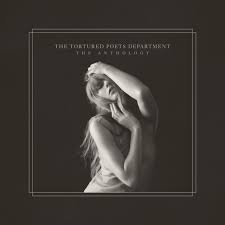I often find myself in the hygiene section of the store spending minutes looking for a product as simple as body wash. Yes, body wash; I spend a lot of time looking for something that should be easy to pick and buy, however I spend minutes grazing the shelf looking or really attempting to find a less expensive version of that product:spoiler alert- I never do and end up settling for the original super expensive product. The pink tax affects products sold to women. Such as body wash, I often find that my sister and I spend $10 (Dove) on body wash compared to my dad who only spends $5 (Dove) on body wash. These products that are for basic hygiene or things that we can’t control, cost less for men/men products than for women/women products. The reason for this is due to something called the pink tax. The pink tax should be eliminated from all hygiene products.
The pink tax refers to the tendency for products marketed towards women to be more expensive than those marketed towards men. This phenomenon is often attributed to gender-based price discrimination. This is not a federal tax that women pay; it’s the extra markup added to products that are made for and marked for women. This extra money goes back to the same companies that make the items and upcharge them. This tax is targeted towards women. According to Dora Mekouar, “The price differences suggest that women pay a yearly “gender tax” of about $1,351, despite buying the same products and services as men” (Mekour 1). This means that on average, women’s products are 13% more expensive than similar men’s products. Which doesn’t seem like a lot but it is, especially for those in lower income households. This is not the only thing that is often overpriced and expensive. Period products are often found to be very expensive, this is due to something called the tampon tax.
The tampon tax is an extra sales tax added to period products also known as feminine products, the reason for this is because most states consider them luxury items, this is what makes these products often cost $12 for a box of tampax that will often only last a women one period cycle depending on how heavy their flow is. I have experienced this first hand, as someone who experiences a period I often find myself in the feminine hygiene section of the store. I find myself often spending up to 5 minutes looking at the different products, the prices and the brands. I look around and see that one box of pads or tampons is as much as $12, maybe even more. I spend a lot of time trying to find a box of product that is less expensive than that but often find myself buying a $10-12 box of product, that -living in a house of women- will most likely last one period. As I walk out of the store having spent that much money on a box of 20 pads or tampons, that will most likely only last 7 days. I realize that I will be right back in the same place next month, spending the same amount of money and the same amount of time looking for something that I need and can’t control.
Some may argue that women’s products take longer and cost more to make. However, when you look at the price of childrens toys. Many girls’ children’s toys are priced higher than boys. Companies will sell the exact same toy, but the pink version meant for girls will be priced higher than the blue or red toy meant for boys. This was proven by a study done where, “Researchers looked at 106 products in the toys and accessories category and found that, on average, those intended for girls were priced 7% higher” (Pink Tax: The Real Cost of Gender-Based Pricing 1). According to The New York Times, “Menstrual products are subject to sales taxes in 35 states” (The New York Times: 22 States Considered Eliminating the ‘Tampon Tax’ This Year. Here’s What Happened 1).
The pink tax costs women thousands of extra dollars a year. This tax has no purpose and doesn’t benefit anyone other than the companies making these products. The pink tax should be signed out of law in every state of America and also everywhere in the world, women shouldn’t be paying more for necessary hygiene products. Especially those in poverty, not to mention all the health risks that could come from the women that have to decide to buy groceries or hygiene products, Women could die of toxic shock syndrome because they don’t have access to enough period products or hygiene products. Both the pink tax and tampon tax should be eliminated. This is simple legislation that can be signed into law, not to mention how free and available period products could help so many women in need. It’s not that hard to make these products available and even if you don’t make them free, me and every other person with a period asks you to get rid of these extra unnecessary taxes.
Sources:
https://www.healthline.com/health/the-real-cost-of-pink-tax#Making-tampons-and-pads-more-accessible
https://www.kiplinger.com/taxes/pink-tax-womens-products-price-discrimination
https://u.osu.edu/compstd1100sp21/2021/04/02/podcast-assignment-the-pink-tax-debate/






























